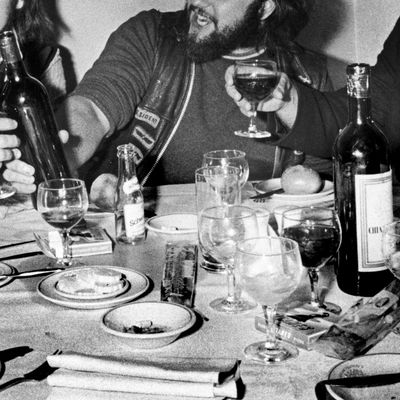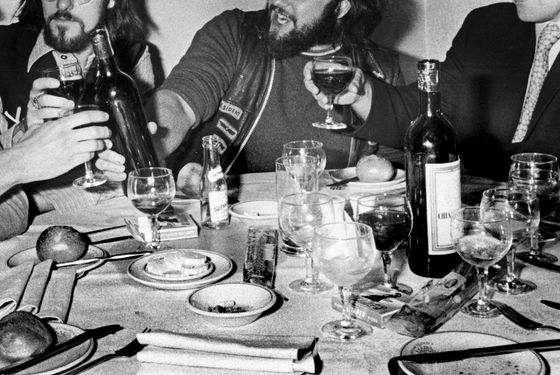
Of all the overtly formal restaurant tropes that have waned over the years — white-gloved waiters, tableside carving service, jacket requirements for guys — there’s still a lot of pomp and circumstance involved in ordering wine, even at casual restaurants. And for people who don’t know a lot about wine, the act of tasting (and approving) a bottle can be stressful, especially during the holidays, when someone is more likely to be out with their in-laws or bosses. Ask anyone who dines out often enough when it’s actually okay to send wine back and the answer will almost invariably be the same: It doesn’t matter if you like the wine; you should only send it back if there’s something technically wrong. But the truth is that almost every sommelier out there is okay with diners engaging in a try-before-they-buy mentality, so long as they don’t turn the dining room into their own personal tasting room.

When it comes to the act of nosing and sipping and nodding and approving, “most of what the guest is doing is ritual,” according Josh Goldman, general manager and sommelier at Ink in Los Angeles. Really, the post-order tasting is just to see if the bottle is compromised, cooked, or corked (one somm I spoke with estimated 5 percent of the bottles he opens per night are tainted with trichloroanisole, or TCA, a compound that results in a bottle being corked). But Goldman says it’s totally fine to send a bottle back if you simply don’t like the wine, too: “It is always okay to send a bottle of wine back, especially if I’ve recommended it to you. We can work until we get it right. However, if you order something off the list and we open it up and you don’t like it, the first bottle is okay. Two is getting a little ridiculous.” (Restaurants will try to recoup their losses on an opened bottle by selling the wine by the glass. Either that, or the chef and manager get to enjoy some wine after service.)
“Your palate is what’s most important,” according to Jared Hooper, sommelier at the Royce in Pasadena. “The best thing you can do to make your wine experience in restaurants better is to simply improve your vocabulary.” He adds, “The biggest mistake that customers make is misusing the word ‘dry.’ Many people say ‘dry,’ and they mean ‘tannic.’ Truly what dry means is that there’s no residual sugar.”
But don’t get bogged down with specific wine terms. One frequent restaurantgoer says he simply asks sommeliers for the funkiest, weirdest wine they have in the $50 range, using flavor descriptors like “barn-y” for reds and “beach balls” for whites. Instead of turning their noses up at the phrasing, the sommeliers always seem excited to help find something unique within that basic set of parameters and often break out a wine that isn’t even on the list.
In being as specific as possible about what you want, you’re helping the somm narrow down from their library of wines, so it’s less likely that you’ll want to send back your selection. Essentially, that open conversation will aid in what sommelier and restauranteur Paul Grieco of New York’s Terrior calls “the dialogue of hospitality.” Of course, love-at-first-taste is never guaranteed, which is why Greico also suggests trying a few wines by the glass and going from there. Just bear in mind that this isn’t like tasting flavors at Baskin-Robbins. A helpful sommelier isn’t a license to treat tastings like a free-for-all.
“I recall a gentleman at Gramercy Tavern who came in once a week and would continually try every one of the whites,” Greico says. “Lo and behold, at the end of the night he’d have consumed eight one-ounce tastes and be gone” having never purchased a glass.
Dana Farner of Cut in Beverly Hills suggests that people who know they’d like to taste a few different wines before buying a glass just ask to try two or three right away, instead of having a server run back and forth. It seems awkward, but it’s just more efficient in terms of time, especially during a rushed dinner service. Plus, as a diner, you’ll end up with three wines on the table at once — not a bad deal.
Most industry insiders were hesitant to pin an exact number to how many tastes is too many. Ultimately, their job is to find the right wine to make sure the customer is happy, whatever it takes. But frankly, if you’ve gone through a handful of pours (or bottles) and still can’t find a wine that suits you, maybe you should just consider ordering a beer.
Related: Sloshed: Maybe We Should Be Judging Wines by Their Labels




